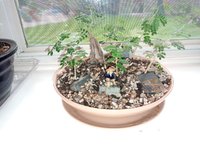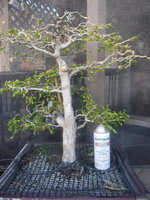Get some
true mahogany.
Swietania mahogani is, believe it or not, a Florida native. It is a tree with compound leaves where the individual leaflets remind me a lot of ficus.
Dalbergia is the genus that includes quite a number of tropical hardwood species.
Dalbergia latifolia is Indian Rosewood. I have never heard of it being called jacaranda - which is a completely different genus.
Jacaranda mimosifolia is the common jacaranda most often seen everywhere in SoCal and Florida. I, personally, would skip it. Ugly, leggy growth with long compound leaves. Last tree to bud out in the spring. First to drop leaves in the fall, with no fall color. For two weeks in the summer it bears the most beautiful blue flowers... but the rest of the year it looks like trash.
Personally, if I were looking for a tropical hardwood species to grow, it would be Gaboon ebony,
Diospyros crassiflora (yes, it belongs to the same genus as princess persimmon, another of my favorites). Haven't found one yet,
but they supposedly make good bonsai.
View attachment 455609






